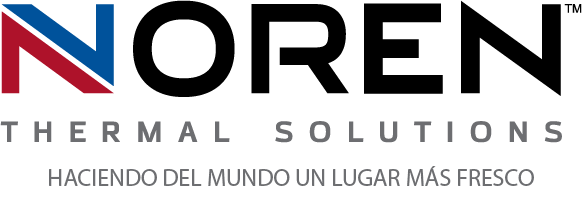 Companies in every modern industry have benefited significantly from the use of more efficient electrical cooling solutions. Compared to the more conventional methods of air conditioning and air compression, more advanced heat exchangers have provided substantial electrical cooling capabilities while minimizing the amount of energy required to accomplish it. The secret to these benefits lies in the more natural ways that heat exchangers prevent overheating, which involves consistently removing waste heat from electrical enclosures rather than introducing chilled air into them. While this process has generally revolved around creating ambient cooling cycles for typical applications, it can also be utilized for applications that require higher-performance, below-ambient cooling, as well.
Companies in every modern industry have benefited significantly from the use of more efficient electrical cooling solutions. Compared to the more conventional methods of air conditioning and air compression, more advanced heat exchangers have provided substantial electrical cooling capabilities while minimizing the amount of energy required to accomplish it. The secret to these benefits lies in the more natural ways that heat exchangers prevent overheating, which involves consistently removing waste heat from electrical enclosures rather than introducing chilled air into them. While this process has generally revolved around creating ambient cooling cycles for typical applications, it can also be utilized for applications that require higher-performance, below-ambient cooling, as well.
When ambient cooling isn’t sufficient
When heat exchangers gained prominence as an industrial electrical cooling solution, they introduced ambient cooling processes that effectively cooled most common electrical applications. Ambient cooling involves utilizing an eco-friendly cooling fluid to consistently absorb and remove waste heat from inside of an electrical enclosure. This keeps the temperature inside of the enclosure at just above the ambient temperature outside of it, and in most applications, this is more than adequate for preventing overheating withing the enclosure. Yet, some applications have maximum operating temperatures that are below the temperatures outside of the enclosure, and therefore, require below-ambient cooling solutions to properly maintain.
Traditional solutions for below-ambient cooling
Because the process of transferring waste heat within an electrical enclosure typically generates efficient ambient cooling processes, companies with applications that require below-ambient cooling have often continued to rely on traditional cooling solutions. Before the advent of heat exchangers, companies more often relied on similar solutions, such as air conditioners, to cool most applications. With their ability to chill the inside of enclosures to well below the ambient temperatures outside of them, air conditioners and similar solutions can provide the below-ambient cooling results that some applications still require. However, by customizing more natural heat exchangers, companies can also benefit from streamlining their below-ambient cooling processes as much as their more conventional ambient cooling requirements.
The use of advanced thermal management processes
The advantages to utilizing more natural methods of electrical cooling have been significant to companies in many different areas. For example, transferring waste heat instead of utilizing chilled air has helped companies lower their dependence on large amounts of energy, reduce the need for maintenance and occurrences of unscheduled downtime, and much more. As the advantages of more efficient thermal management became more prominent among different industries, companies soon began utilizing the same methods for creating below-ambient cooling processes.
For more information about meeting applications’ need for efficient below-ambient cooling, call Noren Thermal Solutions in Taylor, TX, at 866-936-6736.







